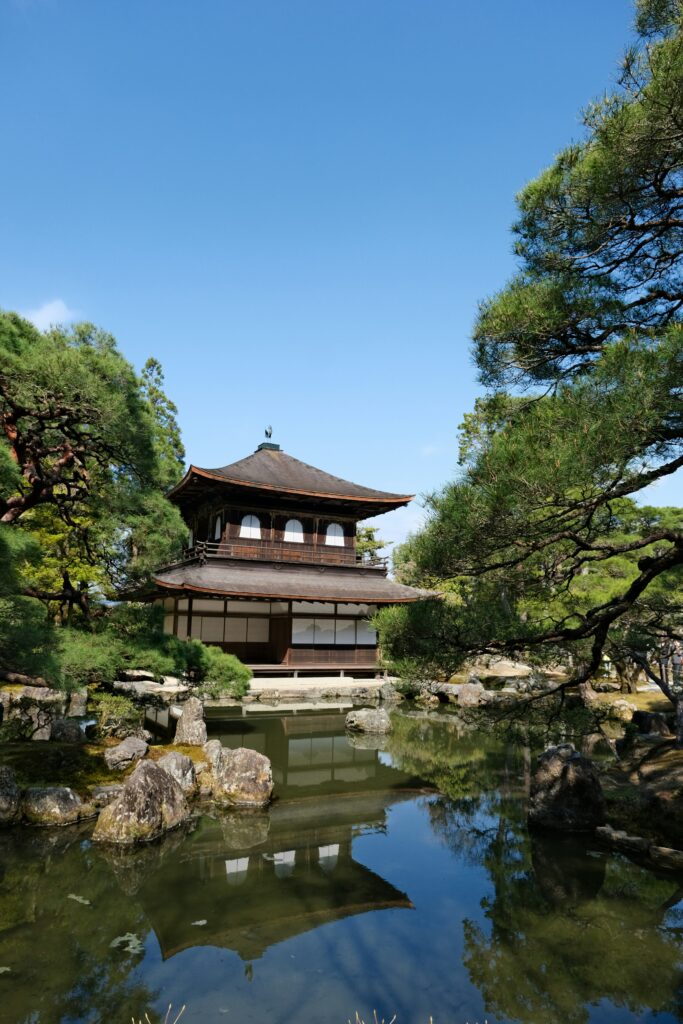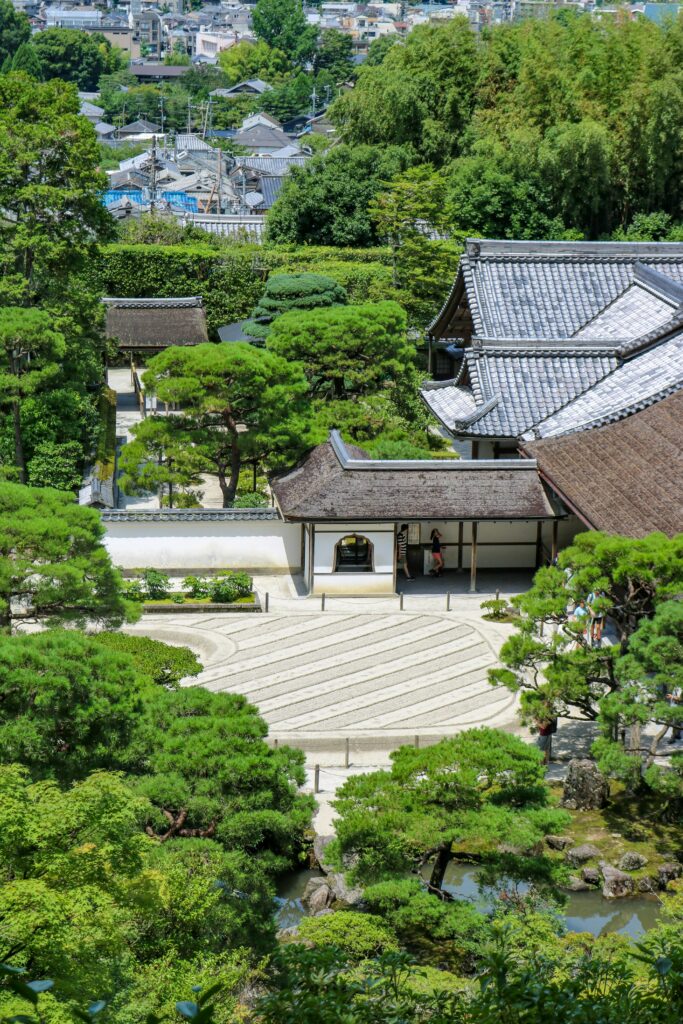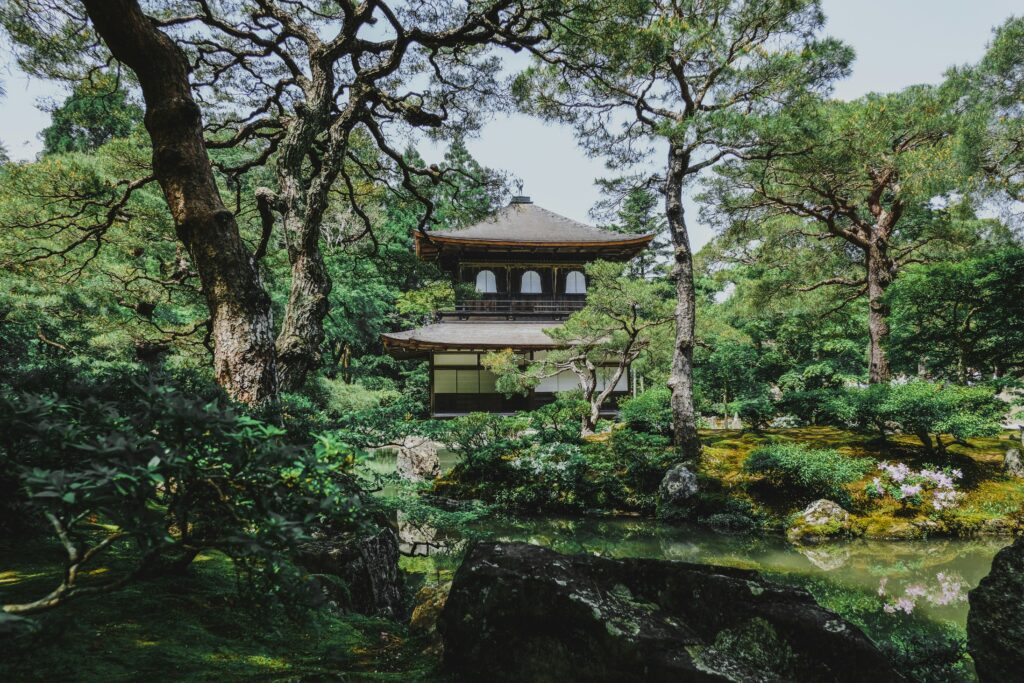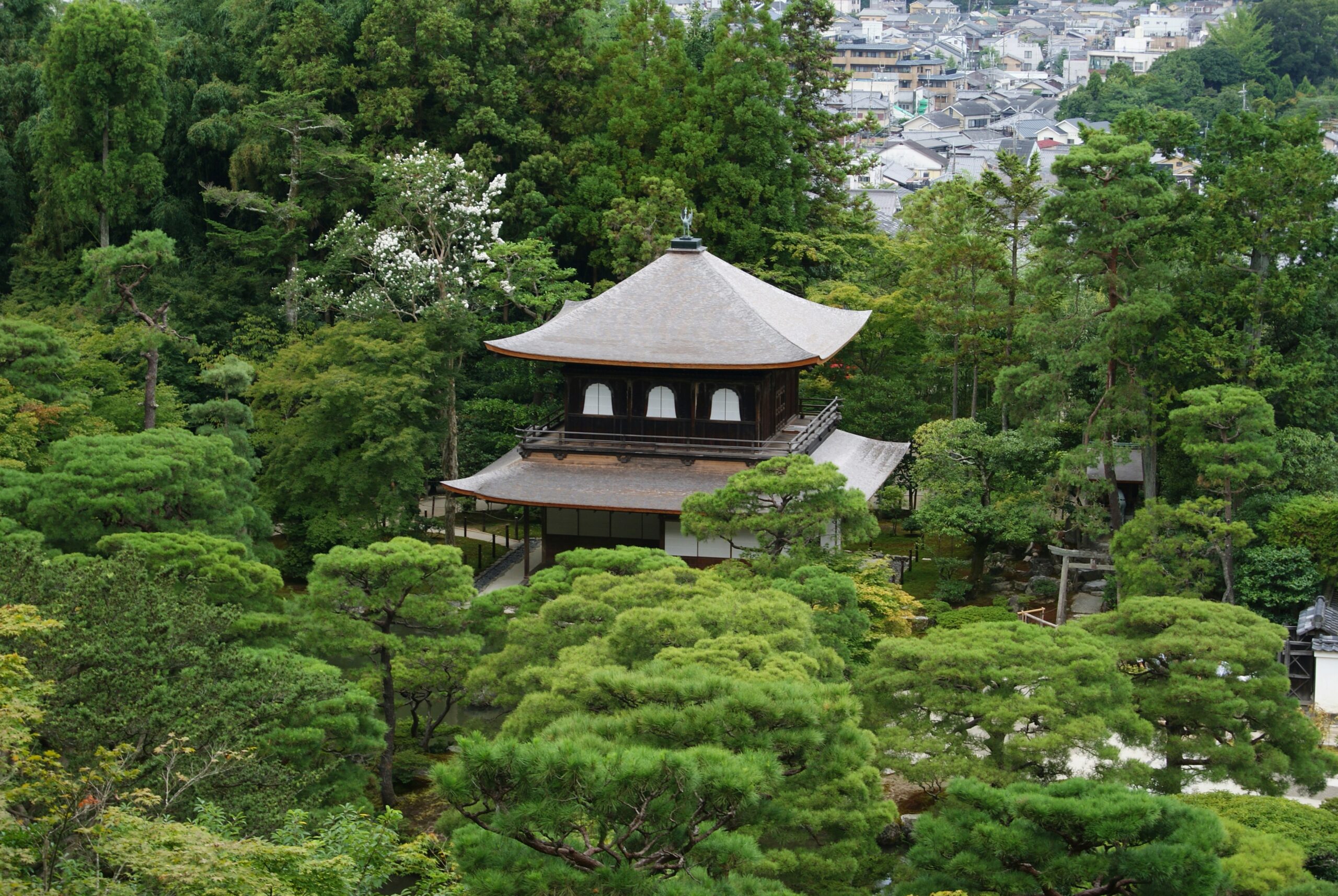The journey began with a single book.
While browsing a bookstore in London, I picked up an essay collection about the Japanese sense of beauty. It spoke of a subtle aesthetic called wabi-sabi, and of a quiet emptiness known as ma—the space between things. With every page, I felt an uneasy contrast stir within me, reflecting the life I had been leading: always chasing speed in a world of noise. Why does beauty found in subtraction draw us in so deeply? The only way to understand was to see where it was born. And so, I set out for Kyoto—to visit Ginkaku-ji.
It was a lush May afternoon when I stepped through the temple gate, and the air seemed to shift. The scent of damp earth, the whisper of wind through the leaves, and the distant call of birds—all were quiet, yet undeniably present.

Ginkaku-ji, or the Silver Pavilion, began as a retreat built in the 15th century by shogun Ashikaga Yoshimasa, who withdrew from the chaos of politics in search of peace.

Unlike the opulence of the Golden Pavilion, this temple’s subdued, gray-plastered exterior stood in striking contrast. I found myself deeply drawn to its quiet grace.

Before the pavilion stretched a garden of white sand, raked with delicate precision to resemble gentle ripples. At its heart stood a conical mound, pointing silently toward the sky. I later learned it was called the “Moon-Viewing Platform,” designed to reflect moonlight. In that moment, I was moved by the quiet intelligence and poetic spirit hidden in the stillness.

Climbing a moss-lined path that overlooked the garden, the whole scene below unfolded like a painting. A sensibility that rejects excess and cherishes nature as it is—perhaps this restraint is at the heart of Japanese beauty.
At the garden’s exit, I passed a petite elderly woman. She leaned on her cane and smiled warmly at me.
“Welcome, from a faraway place,” she said, in English.
I couldn’t help but ask, “What do you love most about this temple?”
She paused before replying, “That it doesn’t try to say too much. It gently holds your heart within nature. The older I get, the more I long for places like this.”
It was a kind of inner stillness I had never known.
Later, I wandered to a quiet shopping street about ten minutes away and found a small soba restaurant nestled in a wooden building. The fluttering curtain at the entrance, and blooming hydrangeas at the eaves, quietly invited me in. Inside, the tatami mats and scent of wood eased me into comfort.
I ordered cold soba with a side of vegetable tempura. The soba was fragrant and smooth, the tempura—eggplant and pumpkin—light and crisp, seasoned gently with matcha salt. Simple, yet deeply satisfying. Here too, I found beauty in restraint.
In the afternoon, I boarded a city bus to Shisendo, a villa built by the poet and scholar Ishikawa Jozan in the early Edo period. As I sat on the veranda of the small study, gazing out at the greenery, the rustling of leaves in the wind reached me like a soft voice. Just being in the stillness, I felt my inner tensions gently loosen.

The next day, I visited Daitoku-ji in northern Kyoto—a major Zen temple of the Rinzai school. Within its vast grounds lay many smaller sub-temples. One, called Ryogen-in, left a deep impression on me.
Its garden was a field of white sand, carefully raked into wave-like patterns, with stones of various sizes placed in quiet harmony. They didn’t speak or move, yet they seemed to communicate something essential. It was a strange balance—neither fully natural nor entirely artificial.
I sat on the edge of the veranda and simply watched. Then, without a sound, a monk appeared behind me and spoke gently.
“What are gardens like in your country?” he asked.
I pictured tidy lawns, flowerbeds, and fountains, and replied thoughtfully, “This feels different—like the space itself is asking me a question.”
The monk nodded. “It is not about what you add, but what you choose to leave behind. Our hearts need space, just as gardens do.”
I held his words close.
On the way back, I stopped at a local sweets shop and enjoyed a matcha roll cake with chilled hojicha tea. The sponge was soft and moist, the matcha cream slightly bitter, dissolving gently in my mouth. In the cool interior of the shop, each bite seemed to loosen another knot inside me.

And so, in just two days around Ginkaku-ji, something within me began to shift.
I had lived immersed in a world that moves through achievement, speed, logic, and proof. But in Kyoto, I encountered the quiet depth of what is not said.

Perhaps it is in quiet presence, rather than declaration, that essence resides. Beauty that speaks through stillness, needing no adornment or explanation. That which makes no claim often reaches deepest.
For the first time, I truly felt that quiet power.
—And maybe, that is the very beauty I came all this way to meet.
Something New Travel

